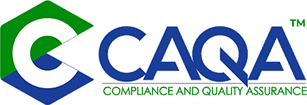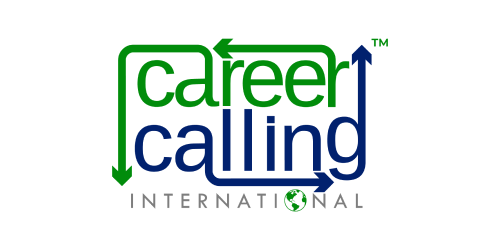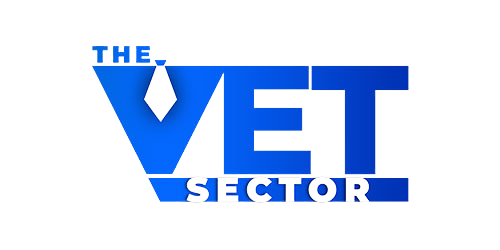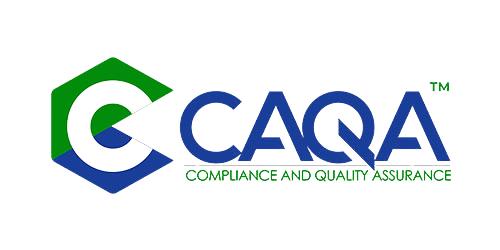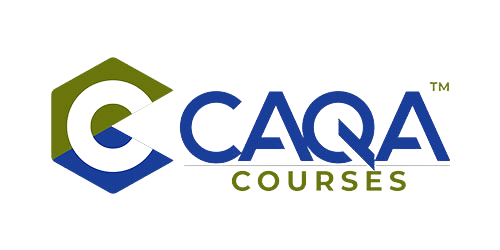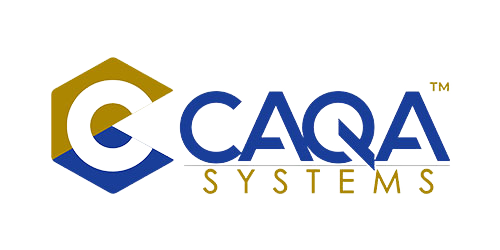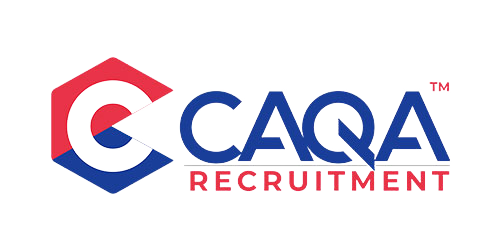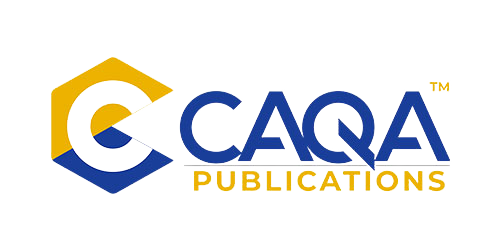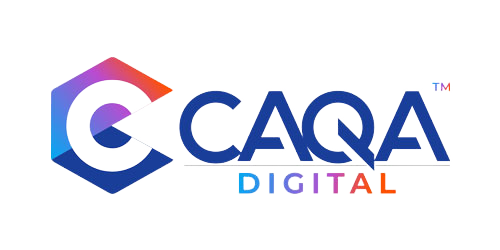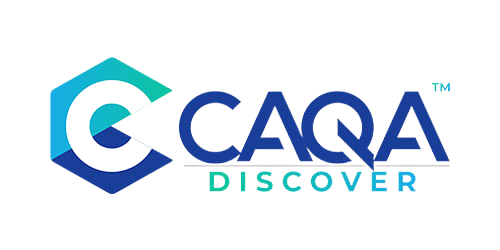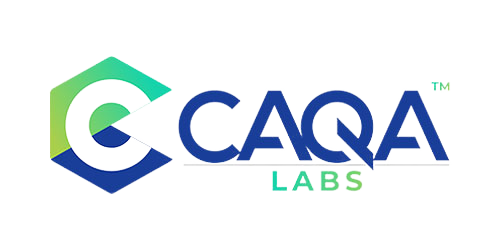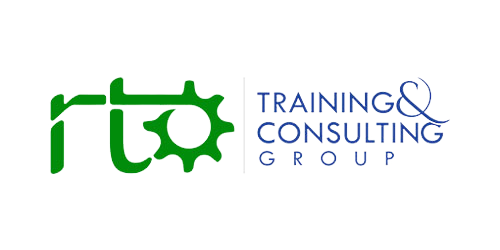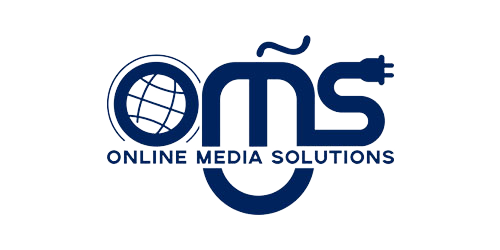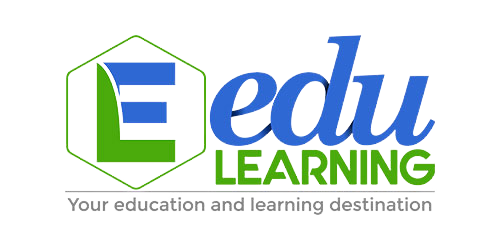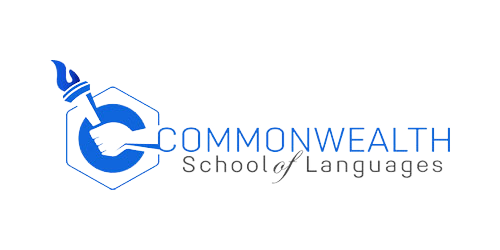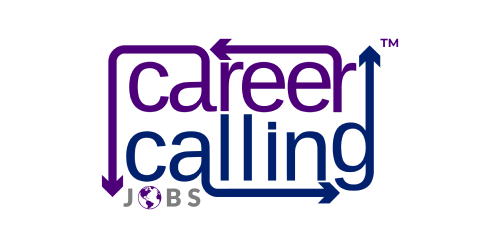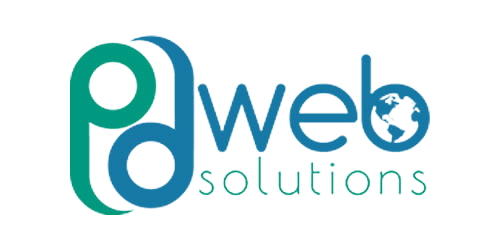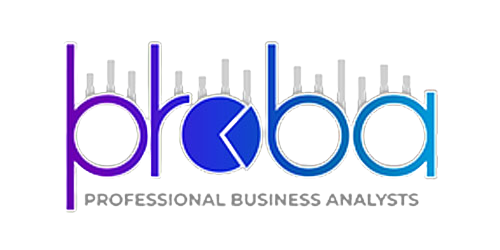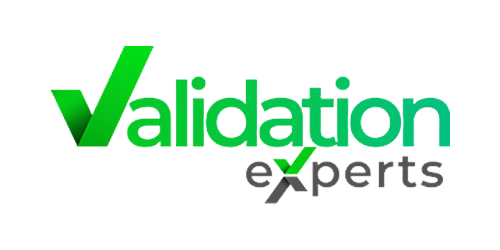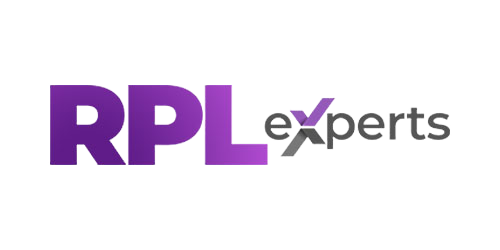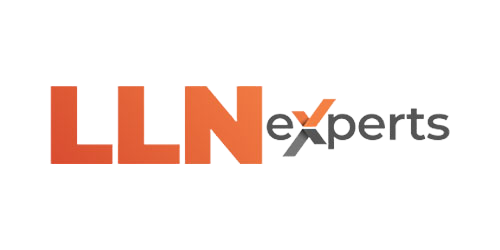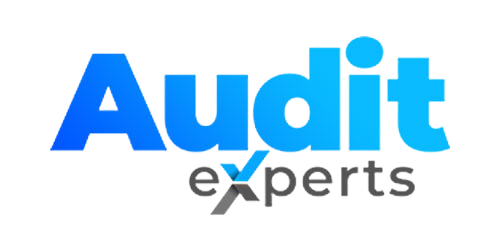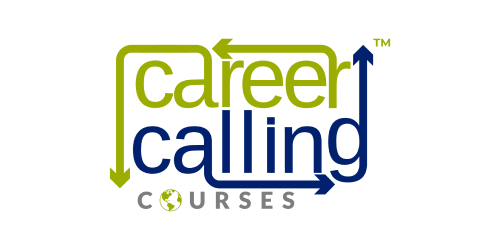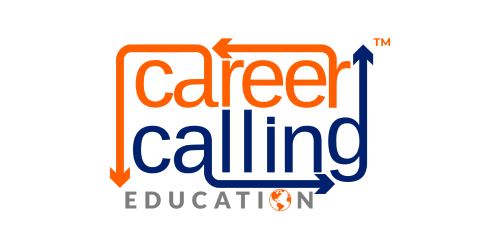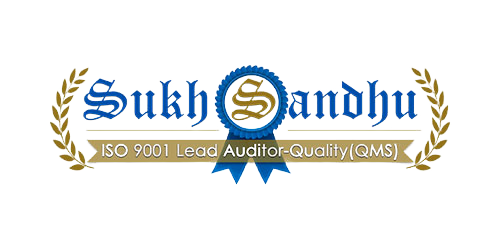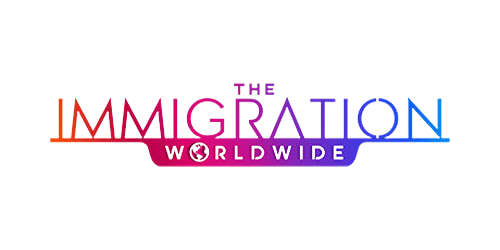Abstract
At the Australasian Entrepreneurs & Business Summit 2025 in Melbourne on 9 August, Sukh Sandhu — founder and director of Compliance and Quality Assurance (CAQA) and Career Calling International — delivered a keynote that resonated deeply across the vocational education and training (VET) sector. His presentation, “Building Trust in the Age of AI: A Compliance-First Approach”, examined the intersection of artificial intelligence, ethics, and regulation, with a clear blueprint for Registered Training Organisations (RTOs) navigating the challenges and opportunities of digital transformation. Drawing on over 30 years of experience in education reform, governance, and compliance auditing, Sukh set out practical strategies for embedding ethics, fairness, and transparency into AI adoption. This article explores the substance of Sukh’s vision, its direct application to VET under the Australian Skills Quality Authority (ASQA) framework, and actionable steps for creating AI systems that enhance educational quality, equity, and innovation while maintaining public trust.
AI in the VET Sector – Promise and Peril
The rapid spread of artificial intelligence into Australian workplaces, classrooms, and boardrooms has created unprecedented opportunities — and risks — for VET providers. With AI projected to be embedded in 90% of businesses by 2025, the technology is no longer an optional innovation but a central element of competitive strategy. In the VET space, AI is already influencing how RTOs deliver personalised learning, automate assessment, detect plagiarism, and manage administrative workflows.
Yet, as Sukh emphasised, this technological capability is accompanied by significant public unease. Consumer and stakeholder concerns about AI ethics, fairness, and bias remain high, hovering around 70% according to recent surveys. For the VET sector, these concerns are not abstract; they go to the heart of regulatory compliance, student trust, and industry credibility. The challenge, Sukh noted, is ensuring that AI adoption does not outpace the governance frameworks needed to maintain transparency, reliability, and fairness.
Demystifying AI for the Education Sector
Sukh opened his keynote with a simple yet powerful act: he stripped away the jargon that so often clouds conversations about artificial intelligence. Rather than indulging in abstract theories or futuristic speculation, he anchored the concept in practical terms, defining AI as systems capable of performing tasks that would otherwise require human intelligence — learning from data, reasoning, recognising patterns, and understanding natural language. This clarity of definition immediately set the tone for a discussion that was not about hype, but about tangible impact.
For vocational education and training (VET) audiences, Sukh distinguished between three broad categories of artificial intelligence that help to frame both the promise and the limitations of the technology. Narrow AI, he explained, is the most prevalent form and already deeply embedded in daily life, including in education. These are purpose-built systems designed for specific functions: student support chatbots that provide instant responses, adaptive assessment platforms that adjust difficulty based on learner performance, or plagiarism-detection tools such as Turnitin’s AI writing detection feature. Learning analytics dashboards like those built into major learning management systems also fall into this category, offering trainers and compliance managers deeper insight into engagement trends and learner outcomes. By contrast, General AI, a more advanced stage of development, represents systems with human-like cognitive ability, able to perform beyond one domain of knowledge into another. While the idea of AGI generates headlines and sparks intense research at organisations like DeepMind and OpenAI, it remains experimental, with many experts forecasting genuine breakthroughs at least several decades away. Beyond that horizon lies the still-hypothetical concept of Super AI, or Artificial Superintelligence, which refers to systems that could one day surpass human cognition entirely. This realm, Sukh cautioned, remains the domain of speculation and philosophical debate.
The message for the VET community was clear. Education and compliance leaders must firmly ground their focus on practical applications of Narrow AI in the immediate future rather than being distracted by the seductive allure of AGI or ASI. Deploying tools such as chatbots, adaptive training systems, and AI-powered compliance monitoring can bring efficiencies and improved learner outcomes today, but adoption must be paired with strong guardrails. Data privacy, ethical application, and risk management frameworks are not optional; they are the very foundations upon which AI innovation in the sector must rest.
To emphasise this point, Sukh placed AI’s current trajectory within the context of its rapid historical evolution. He led audiences on a journey beginning in 1950 with Alan Turing’s introduction of the now-famous Turing Test, through the early decades of expert systems in the 1960s and 1970s, to the watershed moment in 1997 when IBM’s Deep Blue defeated Garry Kasparov, demonstrating that machines had not only become competitive but in some cases superior in complex problem-solving. In 2011, IBM Watson’s victory on Jeopardy! highlighted the power of natural language processing, while 2016 marked another leap when AlphaGo defeated a human champion in the ancient board game Go, regarded by many as too complex for machine mastery. Then came 2022, and the release of OpenAI’s ChatGPT — the moment where AI shifted from research labs into classrooms, offices, and households around the globe, fundamentally reshaping the terms of public engagement with machine intelligence. As Sukh observed, what was once characterised by incremental progress has turned decisively exponential, with breakthroughs compressing closer and closer together.
For compliance leaders in Australia’s $6.6 billion VET sector, these accelerating developments pose both a challenge and an opportunity. With the National Centre for Vocational Education Research reporting more than four million Australians participating in VET each year, the scale of impact AI will have is undeniable. Student enrolment systems, assessment design, engagement tracking, and compliance auditing are already being infused with AI capabilities. The question is not whether this transformation is happening, but whether it is happening responsibly and under proper governance. AI literacy among boards, compliance officers, and senior managers remains patchy, and regulatory frameworks are still finding their footing as they attempt to keep pace with fast-evolving technologies. Australia’s AI Ethics Principles, released in 2021, underscore the importance of fairness, transparency, and accountability — principles that must guide every decision to implement AI tools in training organisations.
Sukh’s message was ultimately a call to leadership. VET providers can no longer position AI as a futuristic issue confined to tomorrow’s world. It is today’s operational reality, reshaping compliance processes, student pathways, and administrative functions in real time. The sector’s mandate is to ensure that innovation and governance advance hand in hand. By embracing the practical power of Narrow AI while embedding rigorous compliance, privacy protections, and ethical safeguards, VET leaders can ensure that technology amplifies trust rather than eroding it — preparing the sector not just to survive technological disruption, but to lead confidently through it.
AI Applications with Direct VET Relevance
In drawing comparisons across industries, Sukh highlighted how artificial intelligence is not simply a technological curiosity but a driver of systemic transformation with direct relevance to vocational education and training. In healthcare, for instance, AI is already being used to develop personalised treatment plans by analysing vast datasets of genetic, clinical, and lifestyle information. In 2024, Australia’s CSIRO reported that AI-enabled health technologies could contribute over $22 billion annually to the national economy by 2030, with much of that impact stemming from personalised and preventive care. Sukh then connected this to the training sector, pointing out that the same kind of personalisation is becoming possible in VET — through adaptive learning platforms capable of tailoring training delivery to the unique pace, strengths, and knowledge gaps of each learner. For RTOs, such systems could not only lift completion rates but also ensure that learners acquire competencies aligned with the precise needs of industry.
He drew a further parallel from the finance sector, where AI systems are indispensable in monitoring transactions to flag fraudulent activity in real time. According to the Australian Banking Association, fraud-related losses exceeded $3.1 billion in 2023, prompting banks to increasingly rely on AI and machine learning models for anomaly detection. In VET, he explained, this capability translates into safeguarding academic integrity by detecting irregularities in assessment submissions, from ghostwriting to AI-generated responses, with platforms already trialling in Australia that integrate plagiarism detection with AI-authorship analysis. These tools, if deployed responsibly, could strengthen confidence in qualifications, particularly in regulated areas such as trades and healthcare training.
Logistics offers another compelling example. The sector has embraced AI optimisation tools that map efficient transport routes, reduce fuel consumption, and adjust distribution schedules in response to weather or real-time traffic data. Research from McKinsey estimates such technologies could trim global logistics costs by 15% or more by 2030. In the context of VET, this same principle of optimisation applies not to trucks or supply chains but to training itself. Trades education, for instance, is increasingly adopting AI-driven simulators that replicate complex workplace scenarios — from electrical wiring to heavy machinery operations — in safe, controlled environments. This approach minimises risk while accelerating learner readiness, particularly critical as Australia faces ongoing shortages in key trades such as plumbing, electrical, and construction, with federal forecasts suggesting a national shortfall of 90,000 trade workers by 2027.
Looking ahead, Sukh also cautioned that emerging technologies on the horizon — agentic AI systems capable of independent decision-making, autonomous robotics that can perform tasks without human oversight, and quantum-assisted algorithms promising leaps in speed and problem-solving power — will undoubtedly enter the education and training landscape. Their potential is enormous: a workforce analytics system, for instance, that could map skills gaps across the national economy in real time, enabling governments and training providers to deploy resources where demand is most acute. Yet he warned that ambition must be balanced with pragmatism. Registered Training Organisations (RTOs) vary greatly in their resources and regulatory capacity, and rushing to integrate these frontier technologies without proportional safeguards risks undermining not only compliance but also trust.
For the VET sector, the lesson from these cross-industry examples is clear: AI’s transformative power is real, immediate, and deeply relevant, but its adoption must match the realities of the sector — grounded in compliance, scaled to capacity, and aimed squarely at improving learner outcomes while maintaining the integrity of qualifications.
Trust as the Cornerstone of AI Integration
At the heart of Sukh’s keynote was a principle that cuts across every industry grappling with artificial intelligence: trust is not optional — it is the foundation upon which adoption stands or falls. For the VET sector in particular, he emphasised three interdependent pillars that define trustworthy AI: reliability, transparency, and fairness. Without these, the promise of innovation risks being overshadowed by reputational damage, regulatory intervention, and learner harm.
Reliability, he argued, begins with the system’s basic capacity to perform consistently and accurately. In education, AI tools that misclassify assessments, provide incorrect feedback, or malfunction under load can directly compromise learning outcomes. A 2024 Stanford University study found that large language models produced demonstrably different levels of accuracy depending on content type, highlighting the risk of variability in high-stakes training environments such as healthcare or aviation. For RTOs, reliability must be benchmarked against the same rigour expected of assessment instruments under Standards for RTOs, where validity and consistency are paramount.
Transparency formed the second pillar of trust. In sectors like finance and healthcare, the demand for explainability is already shaping compliance standards — with the European Union’s AI Act (2024) requiring that any AI system affecting individual rights must include the ability to “show its workings.” In the VET sector, this issue is becoming equally pressing. If an adaptive learning platform recommends additional remedial work for a learner or flags irregularities in assessment behaviour, trainers and regulators must be able to trace how and why that decision was reached. Sukh warned that “black box” systems undermine not only trust from students but also compliance with auditing frameworks, where decision-making processes must be documented and defensible.
The third criterion, fairness, has perhaps the most profound implications for equity. Bias in AI has been repeatedly documented. In 2023, an MIT study found facial recognition systems still misclassified darker-skinned individuals at error rates up to 10 times higher than lighter-skinned groups. Translating this risk into the VET context raises troubling questions: could automated plagiarism detection tools disproportionately flag students from non-English speaking backgrounds due to stylistic differences in writing? Could predictive analytics inadvertently channel learners into lower-level training pathways based on incomplete datasets? For a sector that trains more than 4 million Australians annually, with 31% of learners from non-English speaking backgrounds (NCVER, 2024), the stakes are too high to dismiss such risks. Fairness is not simply an ethical ambition; it is a requirement for compliance with ASQA’s core mandate of equitable access and outcomes.
Sukh’s most provocative point was that trust criteria cannot be layered onto systems after deployment — they must be embedded from the moment of design. He pointed to research from Deloitte indicating that 60% of AI implementation failures in enterprise settings stemmed not from technological shortcomings but from inadequate attention to governance and compliance in the early stages. For VET providers, this means building compliance checkpoints into procurement, piloting, and evaluation stages, rather than waiting for regulatory scrutiny after rollout. Far from slowing innovation, proactive compliance creates efficiency by preventing costly remediation, reputational damage, or even deregistration.
Ultimately, Sukh’s message reframed trust not as a regulatory hurdle but as the enabler of sustainable innovation. In a sector where public confidence underpins every learner’s credential and every employer’s workforce strategy, building AI that is reliable, explainable, and fair is not just a moral imperative — it is an economic necessity. Trust, in this way, becomes the bridge between AI’s promise and its real‑world adoption.
Global Benchmarks for AI Regulation
To situate Australia’s approach within the global conversation, Sukh drew comparisons with international frameworks that are shaping the future of AI governance. The most visible example is the European Union’s AI Act, which, after years of negotiation, was passed in 2024 and will begin phased implementation from 2026. The Act uses a tiered, risk‑based classification system: low‑risk applications, such as spam filters, face minimal oversight, while high‑risk AI systems — including those used in education, recruitment, and healthcare — are subject to strict obligations around transparency, human oversight, and safety testing. Systems deemed “unacceptable risk,” such as social scoring based on behaviour, are outright banned. For VET providers, the EU’s approach matters not only because of its scope — covering a market of over 450 million people — but because it is already becoming a global benchmark affecting transnational education partnerships.
Across the Atlantic, the US National Institute of Standards and Technology (NIST) released its AI Risk Management Framework in 2023. Unlike the EU’s enforcement‑driven model, NIST’s framework is voluntary but widely adopted by US government agencies and private industry. It provides practical protocols for testing model reliability, stress‑testing systems against bias, and embedding continuous monitoring. Sukh highlighted its relevance for Registered Training Organisations (RTOs) in Australia, who could adapt these testing templates to benchmark AI tools used in assessment or student progression models before deployment in compliance-sensitive environments.
Global standard‑setting bodies are also moving quickly. The OECD AI Principles, endorsed by over 45 countries, including Australia, laid early foundations for emphasising human‑centred AI and accountability. UNESCO’s 2021 Recommendation on the Ethics of Artificial Intelligence further extended this by promoting AI policies that safeguard inclusion, cultural diversity, and protection against bias — principles that directly resonate with the diversity within Australia’s VET cohort, where roughly 31% of learners come from non‑English speaking backgrounds (NCVER, 2024). Meanwhile, technical standards organisations such as ISO/IEC JTC 1/SC 42 have rolled out structured guidance on topics ranging from AI system lifecycle management to trustworthiness assessment, with over 20 standards now published or under development.
What emerges across these international efforts is a striking convergence on a set of priorities: protection of human rights, promotion of fairness and inclusion, enforcement of safety and reliability, and clear accountability and governance mechanisms. Sukh urged the VET sector to view these not as abstract policy ideals but as practical guardrails for adoption. He recommended that RTOs begin aligning with international best practice by incorporating NIST’s reliability stress tests into procurement, adopting ISO standards where applicable, and embedding these within the familiar compliance structures of ASQA’s Standards for RTOs and Australia’s Privacy Act (1988, updated 2022).
The outcome of such alignment, he argued, would be twofold: domestically, RTOs would strengthen compliance and reduce regulatory risk; internationally, they would position themselves for a future where cross‑border credential recognition and collaboration depend on interoperable AI and data governance standards. With the Australian VET sector already exporting training services worth nearly $6 billion annually in education of overseas learners (ABS, 2024), the ability to align with global governance protocols is not a theoretical advantage; it is a competitive necessity.
Practical Steps for Ethical AI Adoption in VET
Building on CAQA’s deep experience in VET compliance and governance, Sandhu set out a roadmap for action that positioned responsible AI adoption not as a compliance burden but as a catalyst for sustainable innovation. He emphasised that the sector must pivot from a reactive stance to a model of deliberate, structured implementation, arguing that Registered Training Organisations (RTOs) can take five practical steps that align with both regulatory imperatives and strategic growth.
The first of these is the establishment of comprehensive AI governance. Just as most RTOs already maintain compliance and quality committees to meet Standards for RTOs and ASQA requirements, the same principles should extend to AI. A 2024 KPMG survey on AI adoption in Australia found that 72% of executives lacked formal governance structures for AI systems, a gap that has already contributed to inconsistent outcomes and reputational failures in other sectors. For RTOs, embedding AI governance within existing oversight mechanisms ensures that decision-making around technology adoption is consistent, accountable, and properly documented for audit.
Secondly, Sukh advocated for robust risk management and auditing processes. Regular internal audits, he argued, need to expand beyond financial or compliance checks and incorporate the testing of AI systems for reliability, fairness, and ethical performance. The Australian Human Rights Commission reported in 2023 that AI systems in assessment and hiring processes can embed bias if not systematically audited. By integrating AI‑specific risk monitoring into annual compliance audits, RTOs can anticipate and address such concerns early, rather than responding only when issues escalate into regulatory breaches or learner complaints.
Privacy‑by‑design and fairness assurance formed the third step. Australia’s Privacy Act reforms, currently under consultation, will increase penalties for breaches and extend obligations around personal data use, making this principle not just best practice but critical legal compliance. Sukh argued that in education, the stakes are particularly high: student records, performance data, and assessment histories are sensitive by nature. Embedding privacy and fairness safeguards from the moment an AI tool is procured or developed ensures that these protections are hardwired into organisational processes. Human oversight must always remain central — AI can support assessments, but it cannot wholly replace the judgment of trainers and assessors when determining competency.
The fourth step was investment in AI literacy and staff capability. Recent NCVER research (2024) showed that while 80% of RTO staff reported using digital tools daily, fewer than 20% felt confident in understanding the compliance implications of AI. Sandhu stressed the need for targeted professional development that goes beyond basic tool usage to include AI ethics, bias awareness, and governance obligations. Just as trainers are expected to maintain current industry skills, ensuring staff are upskilled in responsible AI use must become a workforce priority.
Finally, Sukh called for a cultural shift — fostering responsibility as part of every RTO’s organisational DNA. This means linking AI governance directly to inclusion strategies, reconciliation action plans, and community engagement frameworks. In a sector where trust underpins qualification recognition, organisations that can demonstrate authentic ethical leadership will hold a clear advantage. Research by PwC (2023) highlighted that companies with strong trust cultures reported 30% higher innovation adoption rates compared to those where governance was treated as an afterthought. For VET, embedding this sense of shared responsibility will enable providers to balance rapid innovation with community confidence.
Sukh’s conclusion was unequivocal: these five steps are not optional or peripheral. They are strategic enablers that allow Australia’s training providers to integrate AI responsibly, meet compliance and regulatory expectations, and position themselves as leaders in a global education sector increasingly shaped by technology.
Linking AI Ethics to National Skills Priorities
Sukh was deliberate in linking a compliance‑first approach to AI with Australia’s broader national workforce and equity objectives. He highlighted the role of Jobs and Skills Australia (JSA), the federal agency established in 2022 to provide independent advice on workforce needs and training capacity, as a crucial driver of this alignment. JSA’s 2025 Labour Market Update projected that Australia will need an additional 1.3 million workers by 2030 across critical industries, including clean energy, advanced manufacturing, aged care, digital technology, and construction. Narrow AI, when introduced transparently and with strong governance, can help VET providers equip learners faster, more effectively, and in ways directly tied to these priority industries.
Sukh cautioned, however, that the benefits of AI in training must not come at the cost of fairness or security. Using responsible AI in learner engagement, assessment, and workforce planning means embedding data privacy, explainability, and fairness not simply as ethical ideals but as operational necessities. He argued that RTOs that demonstrate reliability and equity in their AI adoption can actively contribute to JSA’s mission of reducing national skills gaps by ensuring learners are job‑ready for industries where demand is most acute.
The stakes are particularly high for underrepresented cohorts. In regional and remote Australia, where training access is already more limited, the Australian Bureau of Statistics (ABS) notes that people living in very remote areas are 40% less likely to hold post‑school qualifications compared to those in major cities. Similarly, Indigenous Australians remain underrepresented in VET completion outcomes, with NCVER data from 2024 showing that while Indigenous participation in VET reached 6.3% of total enrolments, completion rates still lag significantly behind non‑Indigenous learners. As Sukh highlighted, AI can tip this balance either way: poorly governed systems may reinforce exclusion through biased data or inaccessible digital tools, while responsibly designed platforms could bridge long‑standing opportunity gaps by delivering personalised, flexible, and culturally responsive training.
He pointed to practical applications where AI could boost inclusion if implemented responsibly: adaptive platforms that adjust content for learners who struggle with literacy and numeracy foundations; AI‑powered translation and language support tools for students from non‑English speaking backgrounds; and virtual training simulations that remove geographic barriers, allowing learners in regional areas to practise trade skills without needing access to costly metropolitan facilities. When coupled with strong compliance frameworks, these technologies can scale opportunity without sacrificing trust.
By connecting AI governance with the goals of national workforce planning, Sukh reframed compliance not as a box‑ticking exercise but as the enabler of VET’s contribution to Australia’s future competitiveness. The challenge, he concluded, is to ensure that AI amplifies equity rather than erodes it. For RTOs, this means recognising that every decision about adoption carries both a compliance consequence and a societal impact — with the potential to transform lives across the communities they serve.
Reinforcing CAQA’s Award-Winning Legacy
Sukh’s keynote came on the heels of CAQA’s seven prestigious awards in 2025, including his own Vanguard Honour for Pioneering Leadership. These accolades reinforced CAQA’s credibility as a leader in compliance, governance, and innovation. By applying the same rigorous quality assurance principles to AI integration that have underpinned its success in VET compliance, CAQA positions itself — and its clients — at the forefront of ethical digital transformation.
Summit Reactions and Sector Implications
Audience feedback at the AEB Summit underscored the timeliness of Sukh’s message. Questions from small and medium-sized enterprises (SMEs) reflected concerns shared by many smaller RTOs: resource constraints, AI implementation costs, and the challenge of maintaining compliance without dedicated technology teams. Sukh acknowledged these realities, emphasising scalable, context-specific AI solutions rather than one-size-fits-all systems.
His call to action was unequivocal: “Act now to embed ethics, fairness, and transparency before it’s too late.” For the VET sector, the implications are clear — trust and compliance are not afterthoughts in the AI age; they are the foundations of sustainable innovation.
Conclusion: Compliance is the Pathway to Trust.
As AI reshapes vocational training in Australia, the message from Sukh’s keynote is that the sector’s competitive advantage will rest not on the speed of adoption but on the quality and integrity of implementation. Trust, built through rigorous compliance and ethical practice, is the differentiator that will sustain RTO relevance and reputation in a rapidly evolving educational landscape.
In placing compliance at the heart of AI strategy, Sukh offers the VET sector a practical, principled pathway to navigate the age of intelligent systems — one that aligns with ASQA guidelines, supports national skills priorities, and reinforces the sector’s social licence to operate.
Frequently Asked Questions (FAQ)
1. What was the main theme of Sukh Sandhu’s keynote at the AEB Summit 2025?
It focused on building trust in AI through a compliance-first approach, emphasising ethics, governance, and practical steps for responsible adoption.
2. How does this apply to Australian organisations?
It offers a framework for training organisations, Government departments and wider organisations to integrate AI tools in ways that meet regulatory guidelines, maintain fairness, and improve training quality without compromising compliance. This framework provides a robust and comprehensive approach for training organisations, Government departments, and other wider organisations to seamlessly integrate Artificial Intelligence (AI) tools into their operations. Its core purpose is to ensure that AI adoption occurs in a manner that fully aligns with existing regulatory guidelines, promotes fairness and equity in all applications, and ultimately enhances the quality and effectiveness of training initiatives, all without compromising critical compliance standards.
By offering a structured methodology, the framework guides organisations through the complexities of AI implementation. It addresses key considerations such as data privacy, algorithmic transparency, bias mitigation, and accountability, ensuring that AI tools are utilised ethically and responsibly. This preventative approach helps organisations avoid potential legal and ethical pitfalls while maximising the transformative potential of AI to revolutionise learning and development. The framework is designed to be adaptable, catering to the diverse needs and contexts of various organisational structures and their specific training objectives.
3. What are the three trust criteria Sandhu outlined?
Reliability, transparency, and fairness — each essential for ensuring AI benefits all learners equitably.
4. Which global AI regulations did he reference?
The EU AI Act, US NIST AI Risk Management Framework, OECD and UNESCO guidelines, and ISO/IEC standards. In the rapidly evolving landscape of artificial intelligence, a robust framework of compliance and regulation is emerging to address the inherent complexities and potential risks. Key among these are international and regional initiatives that seek to guide the ethical development and responsible deployment of AI systems.
The EU AI Act stands as a landmark piece of legislation, representing the world's first comprehensive legal framework for AI. It adopts a risk-based approach, categorising AI systems based on their potential to cause harm. High-risk AI systems, such as those used in critical infrastructure or for law enforcement, face stringent requirements, including conformity assessments, data governance, human oversight, and robust quality management systems. The Act aims to foster trustworthy AI, protect fundamental rights, and promote innovation within the European Union.
Across the Atlantic, the US NIST AI Risk Management Framework (AI RMF) provides a voluntary, non-regulatory framework designed to help organisations manage risks associated with AI systems. Developed by the National Institute of Standards and Technology (NIST), the AI RMF focuses on fostering trustworthy AI by promoting collaboration, accountability, and transparency. It encourages organisations to identify, assess, and manage AI risks throughout the entire AI lifecycle, from design and development to deployment and monitoring. The framework emphasises a flexible approach, allowing organisations to tailor its principles to their specific contexts and risk appetites.
Beyond these legislative and framework-based approaches, several international organisations have issued influential guidelines that shape the global discourse on AI ethics and governance. The OECD AI Principles, adopted by 42 countries, provide a comprehensive set of recommendations for the responsible stewardship of trustworthy AI. These principles advocate for inclusive growth, sustainable development, human-centred values, transparency, accountability, and robust security. Similarly, UNESCO's Recommendation on the Ethics of Artificial Intelligence is a globally endorsed normative instrument that outlines shared values and principles to ensure AI benefits humanity while respecting human rights and fundamental freedoms. It covers areas such as data governance, environmental sustainability, gender equality, and cultural diversity.
Finally, international ISO/IEC standards play a crucial role in providing technical specifications and best practices for AI systems. Standards like ISO/IEC 42001 (AI Management System) and ISO/IEC 27001 (Information Security Management) offer guidance on various aspects of AI development and deployment, including quality management, cybersecurity, privacy, and data protection. These standards contribute to interoperability, reliability, and trustworthiness in AI technologies, facilitating their safe and responsible integration into various sectors.
Together, these diverse yet complementary initiatives form a multi-layered approach to AI governance, reflecting a global commitment to harnessing the benefits of AI while mitigating its potential pitfalls and ensuring its alignment with societal values.
5. What are Sukh’s five recommendations for AI adoption in VET?
Establish governance structures, implement risk audits, embed privacy and fairness, invest in staff upskilling, and foster a culture of responsibility.
6. How does this connect to CAQA’s recent awards?
The awards, including Sukh’s Vanguard Honour, affirm CAQA’s authority in compliance and leadership, reinforcing his keynote’s credibility and relevance.
7. Why is a compliance-first approach important for AI?
It prevents ethical lapses, ensures adherence to legal requirements, and builds trust among learners, regulators, and industry partners.
